Tattoo artists may be professionals at what they do, but they sometimes do need some guidance to create the perfect body art. This means that tattoo stencils are important products in their arsenal, providing outlines that help artists to replicate designs on their clients’ skin.
While tattooists can make stencils at home for their clients, not all consumers want to go through that long process. Instead, some will turn to ready-made tattoo stencils with their favorite designs—and that’s where businesses come in.
This article will highlight everything you need to know to ensure you can offer consumers stencils that they won’t be able to resist for their next tattoo.
Table of Contents
A brief look at the tattoo stencil market
Everything to factor in when selecting tattoo stencils in 2024
Bottom line
A brief look at the tattoo stencil market
Tattoo stencils are part of the global tattoo market, which experts predict will grow from US$ 14.70 billion in 2023 to US$ 23.99 billion by 2032. They expect the market to grow at a 9.5% compound annual growth rate (CAGR) from 2023 to 2032. Based on the report, a few factors, like the prominence of tattoos as an artistic expression trend, technological innovations, rise in cultural acceptions, and multiple customization/personalization options, are propelling market demand.
And with a higher demand for tattoos comes the need for more tattoo stencils. Hence, according to the report, North America is the current market leader due to the high prevalence of tattoo culture and acceptance. Asia Pacific is experiencing a surge in tattoo acceptance, driven by urbanization and cultural influences.
Everything to factor in when selecting tattoo stencils in 2024
Design complexity
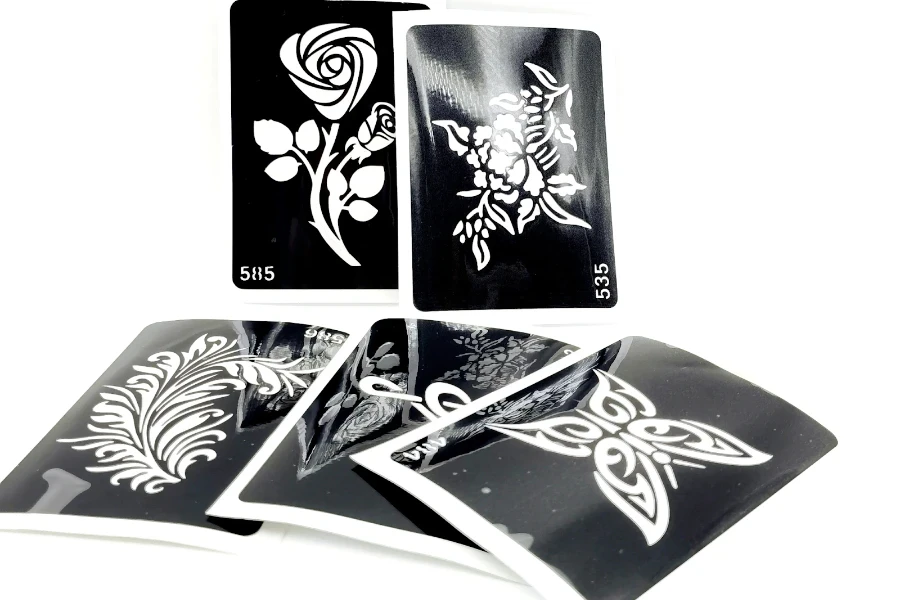
Most consumers see their dream tattoo as creating a masterpiece, so picking the right stencil is their first brushstroke. They think about the complexity of their desired design before buying from business buyers. If target consumers want a detailed fire-breathing dragon or an intricate mandala, retailers must offer stencils with similar detail complexity. But they won’t have to go all out on the stencil paper if they want something easy like a heart.
Why is this important? Offering the perfect stencil gives the consumers the roadmap for tattoo artists to follow. That way, artists can bring the consumer’s desired design to life without missing any detail.
Size and placement
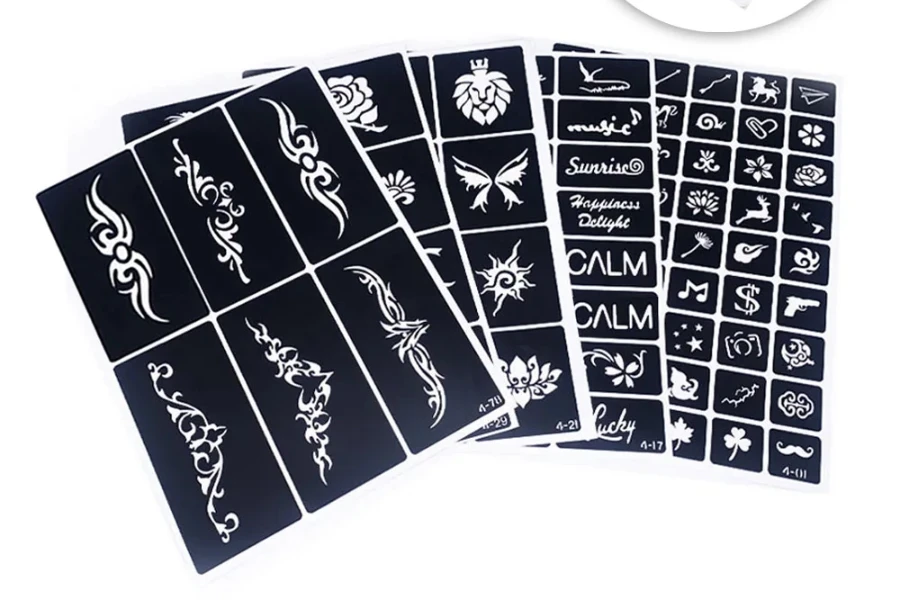
After settling on the design, consumers will decide on the next size and placement. Design complexity determines how big consumers want stencils and where they’ll place them. They won’t want their intricate design to end up looking cramped. Here’s a table showing different stencil sizes and their ideal body areas:
| Stencil size | Compatible body areas | Example tattoos |
| Tiny (1 to 2 inches) | These stencil sizes are perfect for fingers, toes, nape of the neck, behind the ear, and inner lip. | 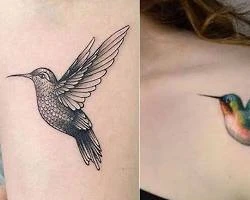 Tiny hummingbird tattoos |
| Small (2 to 4 inches) | Consumers use these sizes for their wrists, ankles, sternum, and behind the knee. |  Small compass tattoos |
| Medium (4 to 6 inches) | These stencil sizes are great for biceps, forearms, calves, shoulders, and upper back. |  Medium rose tattoos |
| Large (6 to 8 inches) | These stencil sizes are ideal for chests, backs, thighs, full sleeves, and stomachs. | 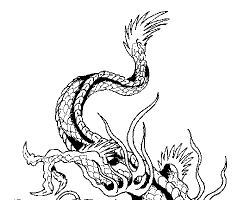 Large dragon tattoos |
| Extra large (8+ inches) | Tattoo enthusiasts prefer using these stencils for full-back, sleeves, legs, chest, and stomach tattoos. | 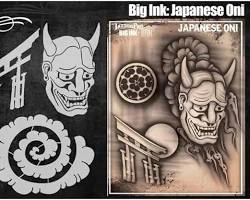 Japanese demon tattoo |
Stencil paper type
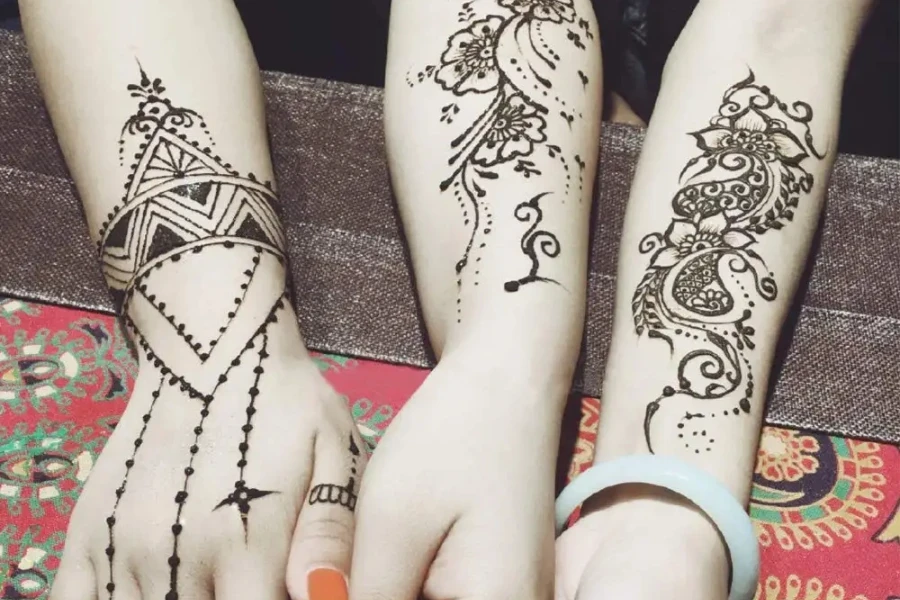
High-quality stencil paper is crucial for a clear and sharp transfer onto the skin. Ideally, the chosen stencil paper should be durable enough to withstand the tattooing process without smudging or tearing. Here’s a table showing the different types of stencil papers business buyers can offer and their pros/cons.
| Stencil paper type | Pros | Cons |
| Thermal paper | Thermal paper offers sharp, high-resolution images. Consumers can easily use them with thermal printers. Thermal paper comes in various colors. | Thermal paper is very sensitive to heat. They’re also very expensive. |
| Hectograph paper | This stencil paper is more affordable than thermal variants. They’re also the easiest for making hand-drawn stencils or photocopying designs. | These stencils can get messy because they’re not smudge-proof. Hectograph papers offer limited detail resolution. They’re not great for complex designs. |
| Spirit master stencil paper | These are the most durable stencil papers. They can easily hold sharp lines and intricate details. SM stencil papers are also resistant to fading and smudging. | Consumers can replicate designs without specialized spirit duplicators. They are more expensive and less beginner-friendly. |
| Inkjet stencil paper | Consumers can use them on a wide range of stencil printers. These papers are perfect for detailed and colorful designs. They’re also relatively affordable. | Some inkjet papers may not be waterproof, causing images to bleed or distort. They’re not as durable as other options. |
Here are some other things to note when choosing tattoo stencil paper type:
- Some papers, like hectographs, may not be suitable for sensitive skin due to the potential for ink residue transfer (not tattoo ink!).
- Intricate designs will always require high-resolution papers, like thermal or spirit master, for an accurate depiction.
Transfer method
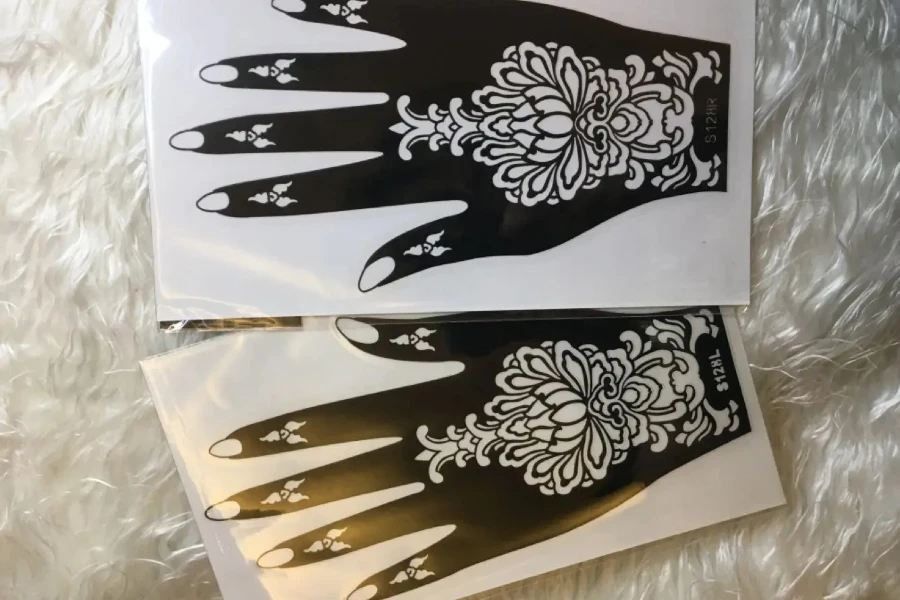
Getting a crisp, accurate tattoo begins with a flawless stencil transfer. Consumers can use three transfer methods: thermal transfer machines, freehand drawing, or stencil transfer gels, depending on the design and paper type.
Thermal transfer machines
These nifty gadgets use heat to imprint the stencil’s design on the consumer’s skin. Efficient and precise, these machines are the go-to for many tattoo artists. Plus, consumers can watch their designs materialize under the heat.
- Compatible stencil paper: This option is for thermal stencil paper only.
- Design compatibility: Consumers can use this method to transfer detailed designs, high-resolution images, complex lines, and large stencils.
Freehand drawing
Consumers may also buy blank stencil papers, giving the artist more creative control. As a result, tattoo artists can use the freehand drawing method to sketch the design directly onto the consumer’s skin using their skills and imagination.
- Compatible paper: Hectograph, spirit master, Inkjet, and tracing stencil paper
- Design compatibility: This method is the best for simple designs, basic shapes, and outlines. Freehand drawing is not ideal for intricate details or large stencils.
Stencil transfer gels
If consumers prefer a bit of DIY action (i.e., without the help of a tattoo artist), stencil transfer gels are their friends. All they need to do is apply the gel over the stencil, press it onto their skin, and voila! The stencil is ready for the artist’s touch.
- Compatible paper: All paper types
- Design compatibility: Stencil transfer gels are the most versatile methods. They can handle or design complexities from simple to detailed.
Bottom line
Tattoo stencils are a great way consumers can ensure artists get their designs right. They’re like guides that create the first template for the tattoo artist to fill in and expertly follow with their skills. However, choosing the perfect stencil relies more on target consumers. Would they want pre-made designs or blank stencil papers? Regardless of choice, businesses can leverage the above mentioned factors to offer only eye-catching tattoo stencils in 2024.




